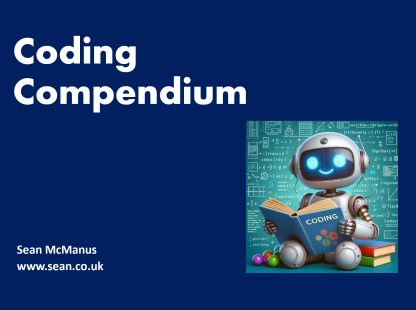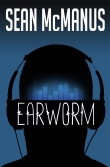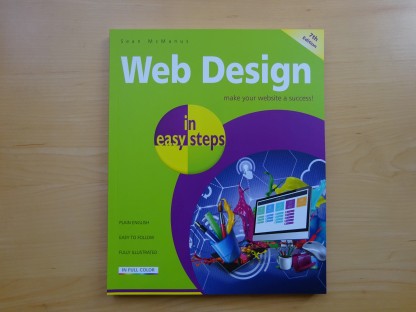
Coding Compendium
A free 100-page ebook collecting my projects and tutorials for Raspberry Pi, micro:bit, Scratch and Python. Simply join my newsletter to download it.
July 2008
by Sean McManus, author of 'University of Death'
 I published my novel satirising the music industry called 'University of Death' through Lulu (Lulu.com). (Update in 2015: I've since republished it as Earworm using Createspace to get it into Amazon - I'd recommend using a channel that enables you to get your book into Amazon today, to reduce the friction in the buying process and potentially increase sales).
I published my novel satirising the music industry called 'University of Death' through Lulu (Lulu.com). (Update in 2015: I've since republished it as Earworm using Createspace to get it into Amazon - I'd recommend using a channel that enables you to get your book into Amazon today, to reduce the friction in the buying process and potentially increase sales).
Lulu is a print on demand (POD) publishing service. It stores a digital copy of your book, and provides a shop front for customers to order a copy. When they do, their copy is printed and despatched to them directly.
In this article, I'll reveal my tips for getting the most from Lulu.
The advantage from a publisher's point of view is that you don't have to pay to print a large batch up-front and you don't have to fill your garage with those books until you can sell them. Lulu provides ecommerce facilities and customer service, which means the service can be fully automated from the publisher's point of view. There are no set-up costs. You set your own price (as long as it's above the cost Lulu wants to charge you for printing), and Lulu will pay you the profits directly.
The disadvantage of using print on demand is that it's more expensive per book than it would be if you printed a large batch through a conventional publisher. If you're aiming for conventional distribution through shops with an ISBN, it can work out prohibitively expensive once the retail margin is factored in. Because each book is printed when the customer orders, it can take a couple of weeks for books to arrive.
My own experience using Lulu has been fantastic and I'm happy to recommend it. Even if you're producing a mass market work, print on demand can be a good way to test your product before committing to a large print run.
 Sean McManus's novel 'Earworm' is a satire of the music industry, based around a major record label and all those who invest their hopes and dreams in it. The book is independently published and can be bought online now.
Sean McManus's novel 'Earworm' is a satire of the music industry, based around a major record label and all those who invest their hopes and dreams in it. The book is independently published and can be bought online now.
"Raising a number of surprisingly sophisticated issues, this book is enjoyably cynical about the seemingly cold-hearted and impenetrable nature of the record industry and peppered with a number of highly comical cameos from the cream of rock'n'roll, which ensures that it never feels like heavy going."
- Record Collector Magazine. More great reviews!
You might also be interested in my article 'How to write a novel'.
© Sean McManus. All rights reserved.
Visit www.sean.co.uk for free chapters from Sean's coding books (including Mission Python, Scratch Programming in Easy Steps and Coder Academy) and more!

A free 100-page ebook collecting my projects and tutorials for Raspberry Pi, micro:bit, Scratch and Python. Simply join my newsletter to download it.

Web Design in Easy Steps, now in its 7th Edition, shows you how to make effective websites that work on any device.

Power up your Microsoft Excel skills with this powerful pocket-sized book of tips that will save you time and help you learn more from your spreadsheets.

This book, now fully updated for Scratch 3, will take you from the basics of the Scratch language into the depths of its more advanced features. A great way to start programming.

Code a space adventure game in this Python programming book published by No Starch Press.

Discover how to make 3D games, create mazes, build a drum machine, make a game with cartoon animals and more!